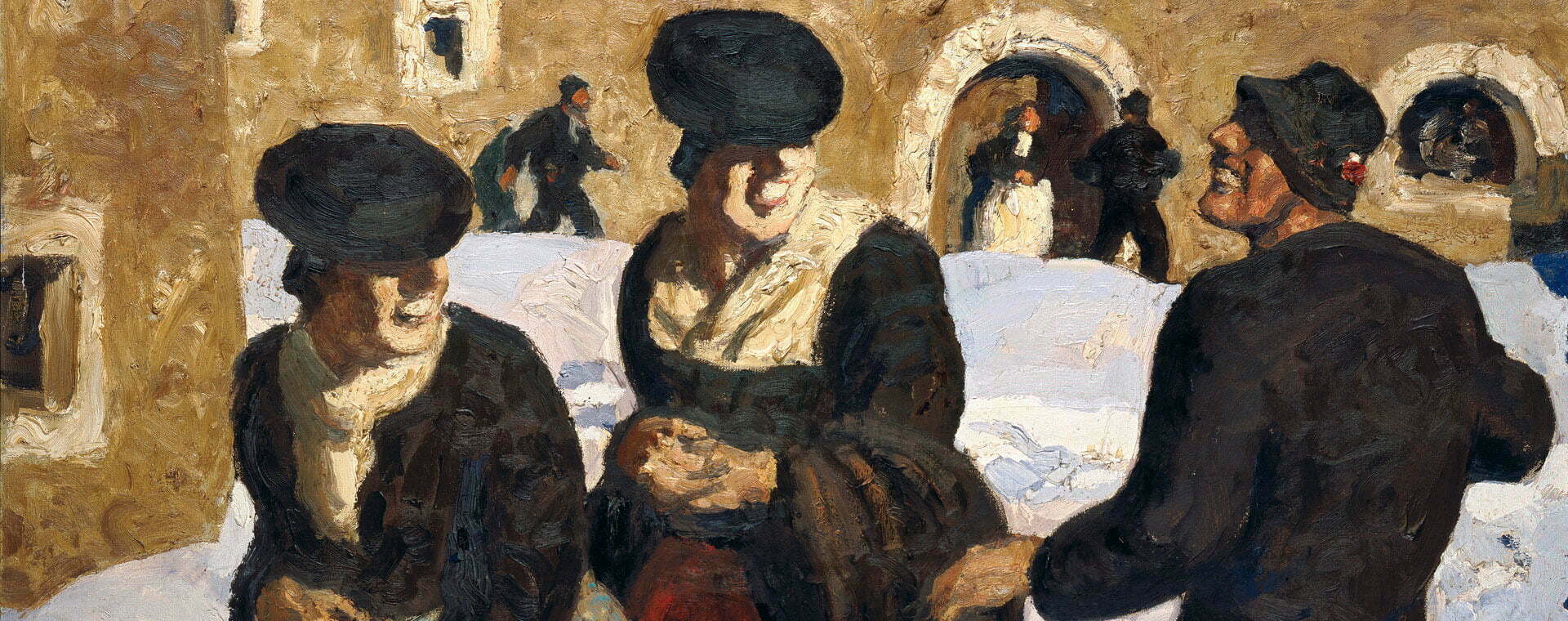HUMAN FIGURES
hroughout his lifetime, Alfons Walde took inspiration from the natural beauty of his native Tyrol, but just as much so fromthe local people and culture. Many inhabitants were farmers, and they were the subject of many of his paintings. Thesepaintings feature a characteristic mannerism traceable to many of Walde’s works, namely that of depicting his humansubjects as a “function” of their natural environment. He chose a style that leaves his human figures, be they in motion orstanding still, virtually lifted of their individuality, one that emphasized the harmony of human beings as an active part oftheir natural environment instead. The sketch-like technique that Walde used to represent human faces are a distinctelement of this style. Around 1926, Walde’s artistic intention developed a new focus. It was no longer the genre-induced “comfortable scenario”that interested him, as he turned instead to a conception of man rooted in the concepts of work, fate and daily existence(See especially his works Holzknecht [Lumberjack], Bauernmutter [Farmer Mother] and Ofenbank [Oven Bench]). With respect to both theme and form, Walde’s work is probably most closely related to the figural work of the Austrianartist, Albin Egger-Lienz. However, Walde’s living scenes retain a decidedly more positive note, as he preferred not toapproach “life and death” subjects directly in his paintings – something that Egger-Lienz did ever more frequently in hislater work. A quote attributed to Gustinus Ambrosi: “No person with an understanding of your (Walde’s) art would possibly compareyou to Egger-Lienz. I mean, he (Egger-Lienz) may also have the large surfaces, but he doesn’t have the form. You have thenecessary youth, the strength to pursue form.”
Walde responded: “I would never deny that Egger has had an influence on me. I hate lying… but I made those smallpaintings with themes of farm life at the age of 18, before I even knew Egger.”


